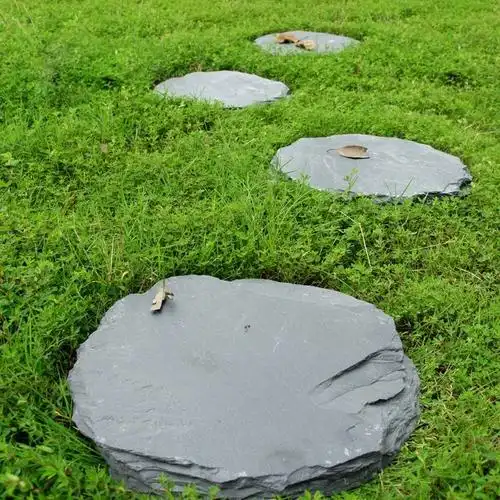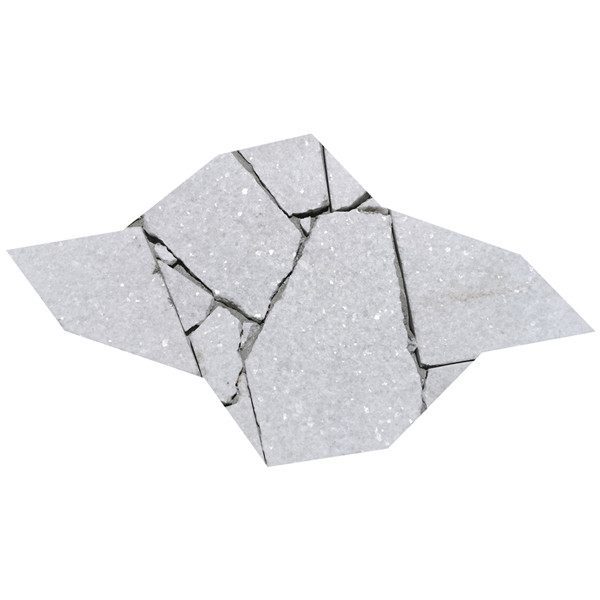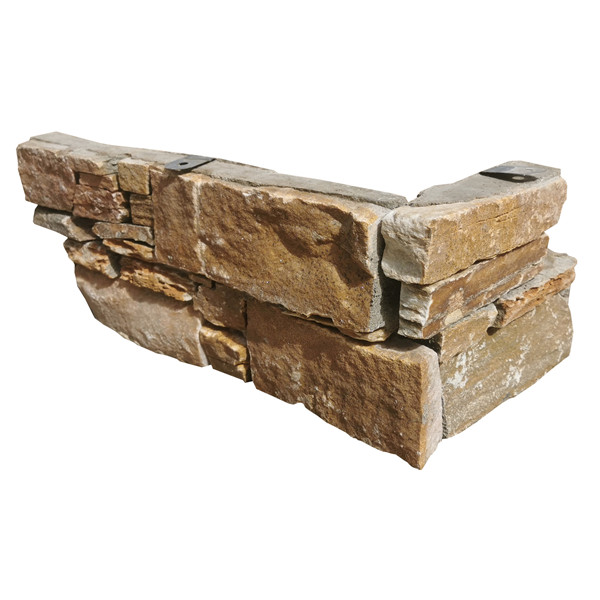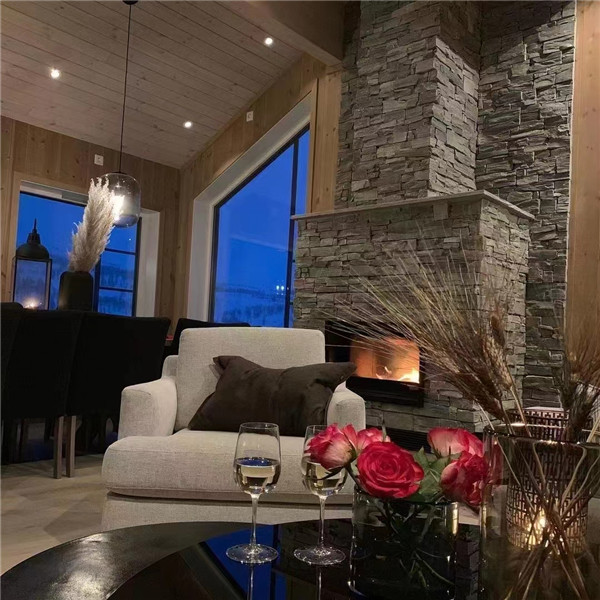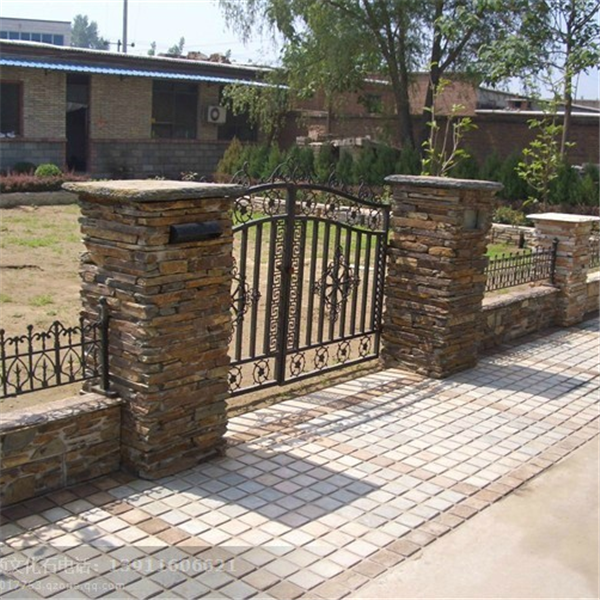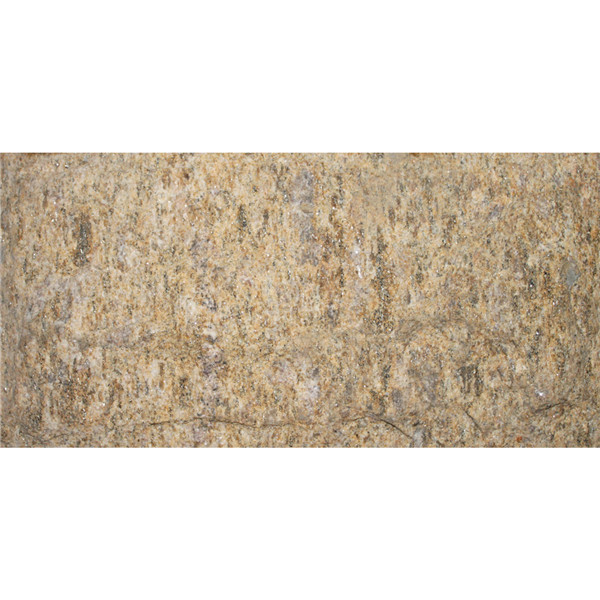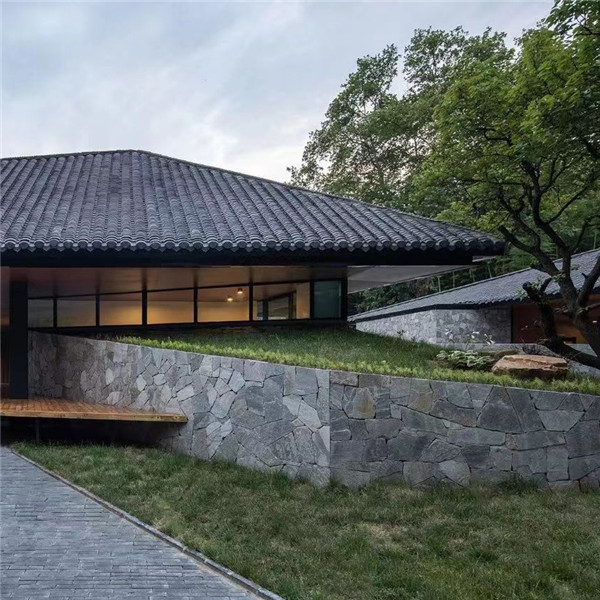Table of Contents
Toggle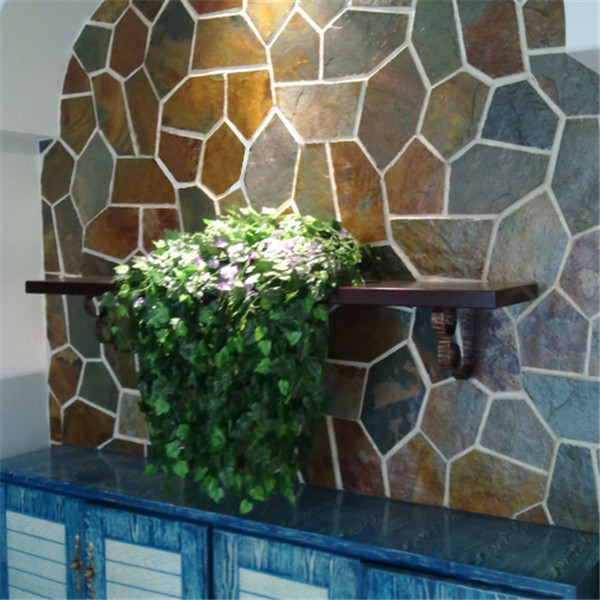
Flagstone, a captivating natural stone, has graced construction projects for centuries, lending an air of rustic charm and enduring beauty. Derived from sedimentary rocks like sandstone, bluestone, slate, quartzite, and limestone, flagstone is characterized by its distinct layered structure. These flat, slab-like pieces are meticulously carved from larger stone formations, resulting in a diverse array of shapes, colors, and textures that cater to every design aesthetic.
The Allure of Flagstone: Versatility and Durability Combined
One of the primary reasons flagstone has remained a popular choice among homeowners and landscapers alike is its remarkable versatility. From patios and walkways to roofing and wall cladding, flagstone seamlessly integrates into both indoor and outdoor living spaces, imparting a natural, organic appeal. Its durability and weather resistance further solidify its appeal, ensuring that your investment stands the test of time.
Factors to Consider When Choosing Flagstone
While the allure of flagstone is undeniable, selecting the perfect variety for your project requires careful consideration of several factors. From the intended purpose and location to your desired aesthetic and budget constraints, each element plays a crucial role in determining the ideal flagstone choice.
Purpose and Location
The intended use of the flagstone is a critical consideration. Are you envisioning a stunning patio where you can entertain guests, or a winding pathway that guides visitors through your meticulously landscaped garden? Perhaps you seek to create a focal point with a flagstone water feature or fireplace. Each application demands specific characteristics from the stone, such as slip resistance, weather resilience, and overall durability.
Additionally, the location of your project will influence the type of flagstone you choose. Regions with harsh winters or frequent rainfall may necessitate a more robust and weather-resistant variety, while milder climates may allow for a wider range of options.
Style and Aesthetic Considerations
Flagstone is available in a kaleidoscope of colors, from warm earth tones to cool grays and blues, ensuring that you can find the perfect complement to your home’s architectural style and existing landscaping. The texture and finish of the stone can also play a significant role in achieving your desired aesthetic. Smooth, polished surfaces lend a more contemporary feel, while rough, natural clefts evoke a rustic charm.
When selecting flagstone, consider the overall design vision for your outdoor living space. Will you be creating a cohesive, harmonious look by incorporating complementary elements, or do you prefer a more eclectic, contrasting style? The versatility of flagstone allows you to explore a wide range of possibilities.
Budget Constraints
While the beauty and durability of flagstone are undeniable, it’s important to consider your budget constraints. Flagstone can range from relatively affordable options to more premium varieties, with prices influenced by factors such as the type of stone, its rarity, and the complexity of the installation process.
To ensure you make an informed decision, research the cost of various flagstone types and consult with reputable suppliers or contractors. They can guide you toward cost-effective alternatives that align with your budget while still delivering the desired aesthetic and functionality.
Popular Flagstone Varieties: A Comprehensive Guide
With a multitude of flagstone varieties available, it can be overwhelming to navigate the options. To simplify your selection process, we’ve compiled a comprehensive guide to some of the most popular flagstone choices, highlighting their unique characteristics and ideal applications.
Sandstone Flagstone
Sandstone flagstone, a sedimentary rock composed of compacted sand particles, offers a warm, earthy aesthetic that seamlessly complements a wide range of architectural styles. Available in shades ranging from beige and tan to deep reds and browns, sandstone flagstone is a versatile choice for patios, walkways, and even indoor flooring.
One of the notable advantages of sandstone flagstone is its ability to maintain cooler surface temperatures during the summer months, making it an ideal choice for outdoor living spaces. However, it’s important to note that some varieties may be more porous, necessitating proper sealing to prevent water absorption and potential damage from freeze-thaw cycles.
Bluestone Flagstone
As its name suggests, bluestone flagstone boasts a distinctive blue-gray hue that lends a touch of sophistication to any outdoor setting. Renowned for its density and durability, bluestone flagstone is an excellent choice for high-traffic areas, such as walkways and pool surrounds.
Originating primarily from the Northeastern United States, bluestone flagstone is highly resistant to harsh winter conditions, making it a practical choice for regions with extreme temperature fluctuations. Its naturally rough texture also provides excellent slip resistance, ensuring a safer walking surface, even in wet conditions.
Slate Flagstone
Slate flagstone, a metamorphic rock renowned for its unique texture and rich color variations, offers a rustic charm that seamlessly integrates into both indoor and outdoor spaces. From deep blacks and grays to vibrant greens and coppers, slate flagstone presents a captivating palette to choose from.
While slate flagstone is well-suited for a variety of applications, including patios, walkways, and water features, it is particularly popular for interior flooring in high-traffic areas due to its exceptional durability and slip resistance. However, it’s important to note that slate may require regular sealing to maintain its color vibrancy and prevent staining.
Quartzite Flagstone
Quartzite flagstone, a metamorphic rock renowned for its exceptional hardness and durability, is an ideal choice for homeowners seeking a low-maintenance, long-lasting solution. Available in a stunning array of colors, including silver, gold, blue, green, and gray, quartzite flagstone offers a versatile canvas for your design vision.
One of the standout features of quartzite flagstone is its resistance to wear and tear, making it an excellent choice for high-traffic areas, both indoors and outdoors. Its non-slip surface also enhances safety, while its resistance to harsh chemicals and weather conditions ensures longevity.
Limestone Flagstone
Limestone flagstone, a sedimentary rock composed primarily of calcite, exudes an elegant and timeless appeal. With a diverse color palette ranging from warm beiges and creams to cool grays and blacks, limestone flagstone can effortlessly complement a wide range of architectural styles.
While limestone flagstone is well-suited for a variety of applications, including walkways, patios, and even indoor flooring, it is particularly popular for use in humid climates due to its weather resistance and ability to withstand moisture. However, it’s important to note that limestone may be susceptible to acid damage, so proper care and maintenance are essential.
Travertine Flagstone
Travertine flagstone, a unique variety of limestone, boasts a distinctive pitted surface that lends a weathered, natural charm to any outdoor living space. With warm hues ranging from tan and beige to rich browns and grays, travertine flagstone offers a versatile and inviting aesthetic.
One of the notable advantages of travertine flagstone is its durability and resistance to extreme temperatures, making it an excellent choice for patios and walkways in both hot and cold climates. However, its pitted surface can pose challenges when it comes to maintenance, as debris and organic matter can accumulate in the crevices, requiring regular cleaning.
Installation Considerations: Ensuring Longevity and Beauty
Once you’ve selected the perfect flagstone for your project, it’s crucial to consider the installation process to ensure the longevity and beauty of your investment. Whether you opt for a dry-laid or mortared installation, following best practices and seeking professional guidance is essential.
Dry-Laid Flagstone Installation
Dry-laid flagstone installation involves laying the stones directly on a bed of compacted gravel or sand, without the use of mortar or concrete. This method is often preferred for its simplicity and natural appearance, allowing the stones to settle and shift slightly over time, creating a more organic look.
To ensure a stable and level surface, proper preparation of the base is crucial. This may involve excavating and compacting the soil, followed by the installation of a gravel or sand base. The spaces between the flagstones can be filled with various materials, such as pea gravel, polymeric sand, or even low-growing ground cover plants, adding texture and visual interest.
Mortared Flagstone Installation
For a more permanent and seamless installation, mortared flagstone is an excellent choice. In this method, the flagstones are set into a bed of mortar or concrete, creating a solid, level surface that is less prone to shifting or settling over time.
While mortared installations require more labor and preparation, they offer increased durability and longevity, making them ideal for high-traffic areas or areas subject to heavy loads, such as driveways or patios with furniture. Additionally, the seamless appearance created by the mortared joints can lend a more polished and contemporary aesthetic to your outdoor living space.
Maintenance and Care: Preserving the Beauty of Flagstone
To ensure the longevity and continued beauty of your flagstone installation, proper maintenance and care are essential. While flagstone is generally a low-maintenance material, following a few simple guidelines can help protect your investment and enhance its appearance over time.
Cleaning and Sealing
Regular cleaning is crucial to prevent the buildup of dirt, debris, and organic matter that can discolor or stain the flagstone surface. Depending on the type of flagstone and the level of exposure to foot traffic, cleaning may be required on a weekly, monthly, or seasonal basis.
Additionally, sealing your flagstone is highly recommended, as it helps to protect the surface from staining, fading, and moisture penetration. Most flagstone varieties benefit from a high-quality sealer applied every one to three years, depending on the manufacturer’s recommendations and the level of exposure to the elements.
Weed Control and Joint Maintenance
For dry-laid flagstone installations, maintaining the joints between the stones is essential to prevent weed growth and ensure a tidy appearance. Regularly sweeping the joints and applying a polymeric sand or other weed-inhibiting material can help minimize the need for manual weeding.
In the case of mortared installations, joint maintenance may involve periodic repointing or sealing to prevent cracking or deterioration of the mortar, which can lead to moisture penetration and potential damage to the underlying base.
Professional Assistance
While many homeowners may feel confident in tackling basic maintenance tasks, it’s always advisable to seek professional assistance for more complex repairs or installations. Experienced contractors and masons can provide valuable guidance on the most appropriate techniques and materials for your specific flagstone variety and application, ensuring a long-lasting and visually appealing result.
Embracing the Natural Beauty of Flagstone
Flagstone flooring is a timeless choice that seamlessly blends natural beauty with enduring durability. By carefully considering the factors that influence your selection, from purpose and location to style and budget, you can create an outdoor living space that reflects your unique design vision while standing the test of time.
Embrace the allure of flagstone and elevate your outdoor spaces with a touch of rustic charm and timeless elegance. Whether you opt for the warm tones of sandstone, the distinctive hues of bluestone, or the captivating textures of slate, flagstone offers a world of possibilities to transform your outdoor haven into a true oasis of beauty and tranquility.




